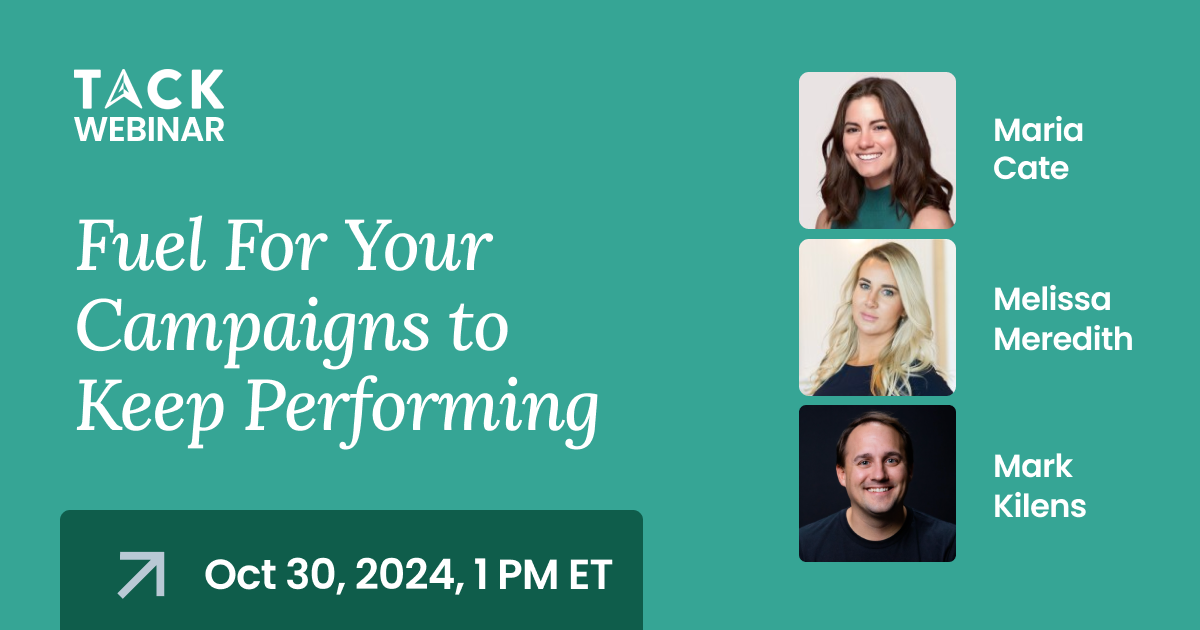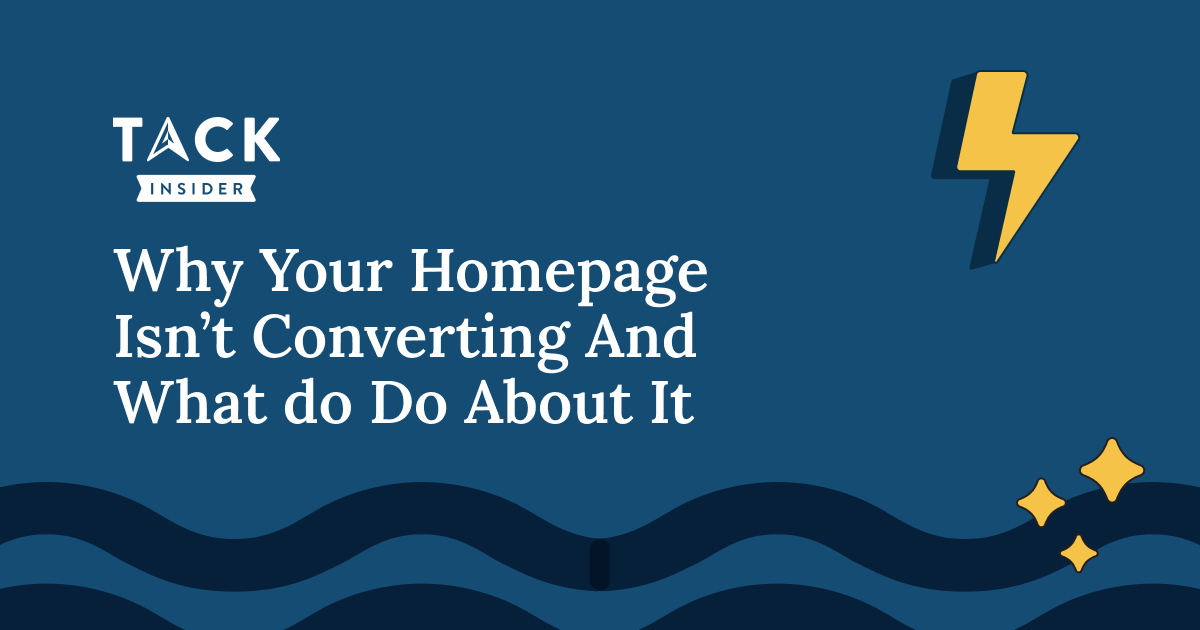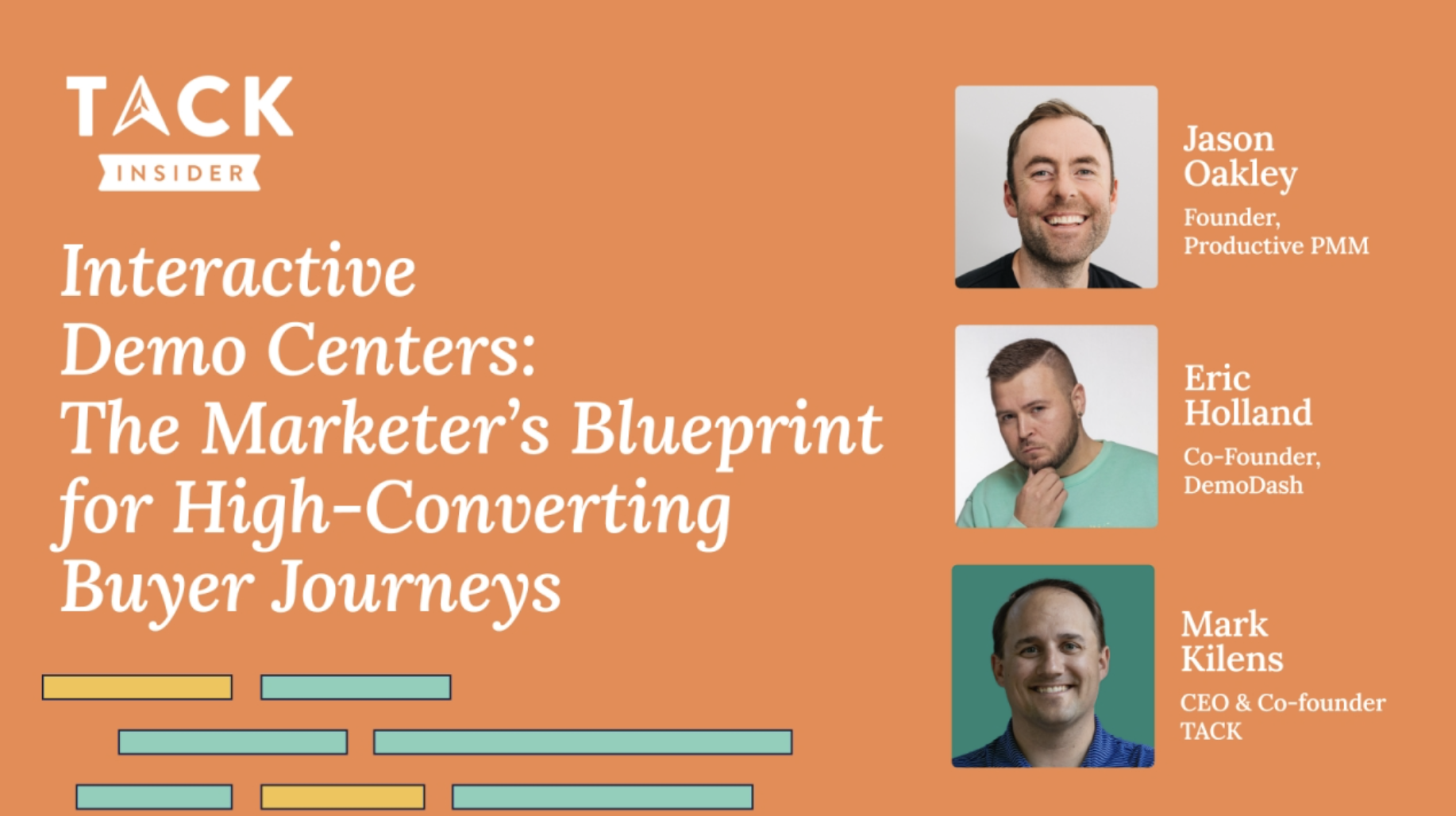Hosted by: Mark Kilens, CEO & Founder at TACK
Speakers: Melissa Meredith, Content Strategist | Maria Cate, Cooth Brand Consulting
Overview
Too many campaigns launch without clear positioning, and stall because of it. Mark Kilens hosted Melissa Meredith (content strategist) and Maria from Kooth (brand strategist) to explore how B2B teams can fuel high-performing campaigns with brand clarity and content consistency. What followed was a practical blueprint for tying brand archetypes, differentiated messaging, and people-first content into integrated campaigns that don’t just launch—but stick.
Below is a breakdown of the key ideas and tactics you can use to build campaigns that perform across the full funnel.
Check out the full slides of the webinar
1. Anchor Every Campaign in a Brand Archetype
If you don’t know who you are, your audience won’t either. Brand archetypes help define your brand’s personality and emotional appeal—something most B2B brands overlook.
- Brand is the space you occupy in your customer’s mind—not your tagline or color palette.
- Archetypes, based on Carl Jung’s theory of the collective unconscious, build affinity by tapping into universal human instincts.
- Strong brands often blend 1–2 archetypes (e.g., Drift’s “Maverick Creator”) to express complexity without confusion.
- It’s not about who you are alone—it’s who your customer needs you to be to move forward.
“Your brand is a tree in a sea of trees—the one with the strongest root system will grow the tallest.”
2. Use Archetypes to Guide Content Strategy
Once your brand identity is rooted, the next step is bringing it to life through voice, tone, visual identity, and customer experience.
- Create messaging and visual assets that align with your archetype’s energy (e.g., Notion’s clean, inclusive “everyman” design).
- Inject personality into every CTA, not just “book a demo.”
- Train your team—especially sales and CS—on how to embody the brand personality in interactions.
- Every customer touchpoint is a chance to reinforce your archetype and differentiate.
3. Position Content Around Promise, Problem, and Solution
Content becomes campaign fuel when it mirrors real audience needs—and leads with value, not features.
- Promise = your brand’s unique value and emotional hook.
- Problem = the pain points or status quo your audience is struggling with.
- Solution = the offering, framed as a natural answer to the above.
- Avoid collapsing the problem into the solution—articulate both clearly to show relevance and urgency.
Think of the brand promise as your “always-on” campaign layer, with problem-based and solution-based campaigns built underneath it.
4. Prioritize Distribution and Differentiation
Great content isn’t enough—it needs to reach the right people, in the right format, at the right time.
- Audit your content formats by funnel stage (e.g., blogs/guides top of funnel; case studies bottom).
- Test gated vs. ungated assets based on campaign goals, not assumptions.
- Consider content placement as carefully as content creation: distribute where your audience actually spends time.
- Treat content like a product—position it, measure it, iterate.
5. Use Your Customers as a Campaign Channel
Your best-performing campaigns often start with your happiest customers.
- Customers are not just proof—they are a distribution channel. Feature their voices in blogs, videos, podcasts, and quotes.
- Build internal alignment to consistently market with customers, not just to them.
- Create customer-led growth loops (onboard → partner → delight) to improve retention and unlock referrals.
- Example: Sendoso’s “Super Senders” program tracked advocacy impact across case studies, review volume, and influenced revenue.
Key Takeaways
- Brand archetypes humanize your marketing and differentiate you from lookalike competitors.
- Campaign messaging should clearly link brand promise, customer problems, and your solution.
- Content consistency—across tone, channels, and funnel stages—is what builds trust.
- Your customers are your most scalable marketing asset—activate them strategically.
- A campaign that resonates emotionally performs better practically.





